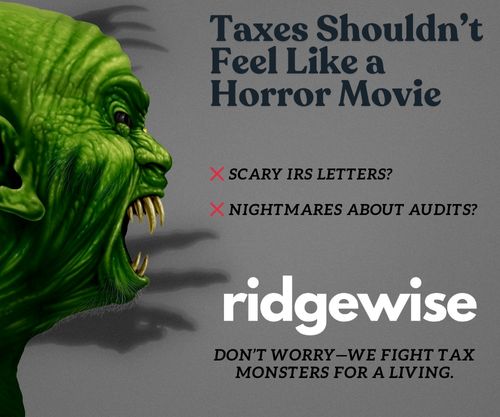Paying off the principal on a loan can seem like a straightforward way to reduce your financial burden. In fact, studies show that borrowers who pay down their principal can save up to 30% on interest over the life of a loan. However, understanding how interest works is crucial to grasping the full impact of your payments. Simply put, while paying off the principal reduces the amount you owe, it doesn’t make the interest vanish entirely.
When you make a payment, a portion goes toward the principal and another portion covers the interest. If you want to navigate these complexities effectively, Ridgewise can help you understand your financial obligations and make informed decisions. With our expertise, you can gain clarity on how your payments affect your overall debt. While other accounting services may offer similar insights, Ridgewise stands out for its personalized approach and commitment to your financial success. Understanding the nuances of your loans is essential for achieving your financial goals.
Understanding Loan Principal and Interest
Understanding loan principal and interest is crucial for managing your finances effectively. The principal amount directly affects the interest you pay over the life of the loan.
Definition of Principal
Principal refers to the original sum borrowed in a loan, excluding interest. When you repay the principal, you decrease the total amount owed. The effect of reducing the principal is significant; it decreases future interest calculations, leading to potential savings over the long term. For instance, if you reduce a $10,000 principal by $2,000, you only pay interest on the remaining $8,000.
Ridgewise can help you keep track of principal payments through precise bookkeeping. This support ensures that you stay informed about your loan status and financial position.
Definition of Interest
Interest is the cost of borrowing money, typically expressed as a percentage of the principal. Interest accumulates over time, making it crucial to understand how it works. For example, if you receive a loan with a 5% annual interest rate, you pay $500 on a $10,000 principal over a year, assuming no principal payments are made.
Ridgewise’s accounting and bookkeeping services can clarify how interest is calculated on your loans. By accurately maintaining your financial records, Ridgewise enables you to make informed decisions regarding loan repayments.
The Relationship Between Principal and Interest
Understanding the connection between principal and interest improves your approach to loan repayment. You learn how these two components interact and how managing one affects the other.
How Interest is Calculated
Interest calculations depend on the principal amount and the interest rate. Lenders often use simple or compound interest methods. Simple interest involves multiplying the principal by the interest rate and the time period. For example, a $10,000 loan at a 5% annual interest rate over three years incurs $1,500 in interest. Compound interest, however, calculates interest on both the principal and previously accrued interest, leading to higher total costs over time. Reducing the principal decreases the base amount for future interest calculations, which leads to lower overall interest charges.
Impact of Paying Down Principal
Paying down the principal directly affects future interest payments. As the principal decreases, the total interest charged throughout the loan’s lifetime also diminishes. For instance, if you reduce a $15,000 loan by $3,000, interest will only accumulate on the remaining $12,000. This reduction can result in substantial savings, as interest typically compounds. A focused approach on principal payments can accelerate loan payoff and decrease associated costs.
Ridgewise offers bookkeeping services that help you track principal reductions and understand their impact on interest. With detailed records and personalized insights, you can make informed decisions about your repayments and achieve better financial stability.
Scenarios of Paying Off Principal
Paying off the principal of a loan affects your overall interest cost. Understanding the scenarios for different types of loans clarifies the impact on total payments.
Fixed-Rate Loans
In fixed-rate loans, the interest rate remains constant throughout the loan term. Paying down the principal reduces the loan balance, which decreases future interest costs. For instance, if you pay off $2,000 of a $10,000 fixed-rate loan, interest calculations change. Interest is then based on the remaining $8,000. Over time, this leads to significant savings as each monthly payment allocates more towards the principal rather than interest.
Ridgewise assists in maintaining accurate records of your principal payments, ensuring you’re aware of how much interest you’re saving with each reduction. Our bookkeeping services help you monitor loan balances and evaluate repayment strategies effectively.
Variable-Rate Loans
Variable-rate loans feature interest rates that fluctuate based on market conditions. When you pay down the principal in these loans, the base for calculating interest adjusts. If you reduce a $15,000 variable-rate loan by $3,000, future interest will apply only to the $12,000 balance, impacting your total cost depending on the current rate. If rates increase, your savings from paying off principal can be even more substantial.
Ridgewise supports clients in navigating the complexities of variable-rate loans. By providing precise financial documentation, we enable you to track interest rate changes and their effects on your loan, allowing for informed decisions about additional principal payments.
Key Takeaways
- Understanding Principal and Interest: The principal is the original loan amount, while interest is the cost of borrowing money. Reducing the principal lowers future interest calculations.
- Impact of Paying Down Principal: Paying off principal decreases the loan balance, which directly reduces the total interest charged over the loan’s life, resulting in significant savings.
- Interest Calculation Methods: Interest can be calculated using simple or compound methods, and a lower principal leads to less interest paid, especially with compounding.
- Fixed vs. Variable Rate Loans: In fixed-rate loans, paying down principal consistently decreases future interest costs, while in variable-rate loans, the effect varies based on fluctuating interest rates.
- Role of Ridgewise: Ridgewise provides personalized bookkeeping services to help track principal payments, understand their impacts on interest, and navigate financial obligations effectively.
Conclusion
Paying down the principal on your loan is a smart move that can lead to significant savings over time. While it won’t make interest disappear completely, it does reduce the amount on which interest is calculated. This means you’ll pay less in the long run. Understanding this relationship empowers you to make informed decisions about your loan repayments.
Utilizing resources like Ridgewise can help you track your payments and see the financial benefits of reducing your principal. By staying proactive with your loan management, you can achieve better financial stability and make your money work harder for you.
Frequently Asked Questions
What is the principal in a loan?
The principal is the original amount borrowed from a lender. It is the basis for calculating interest during the loan term. Reducing the principal directly affects future interest calculations and can lead to significant savings over time.
How can paying down the principal save me money?
Paying down the principal reduces the total amount owed, which in turn lowers future interest payments. For example, reducing a $10,000 loan by $2,000 decreases interest calculations to the remaining $8,000, saving you money over the loan’s lifetime.
What is interest, and how is it calculated?
Interest is the cost of borrowing money, expressed as a percentage of the principal. It can be calculated using simple or compound methods. Simple interest multiplies the principal by the interest rate and time, while compound interest also includes previously accumulated interest.
How does paying down principal affect fixed-rate loans?
In fixed-rate loans, paying down the principal reduces both the loan balance and future interest costs. For instance, paying off $2,000 on a $10,000 fixed-rate loan means interest is calculated on the reduced amount, leading to substantial savings over time.
What about variable-rate loans?
In variable-rate loans, paying down the principal lowers the base amount for calculating interest, which can result in higher savings if interest rates increase. For example, reducing a $15,000 loan by $3,000 means interest will only be charged on the remaining $12,000.
How can Ridgewise help me with principal payments?
Ridgewise offers personalized insights and precise bookkeeping services to help borrowers track principal reductions and their effects on interest. This support enables informed decisions related to loan repayments, contributing to better financial stability.




